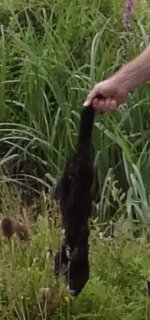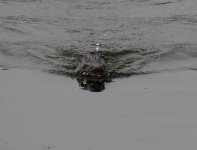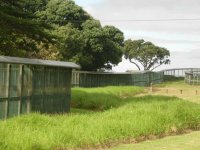alan_rymer
Well-known member

I received a text last night that our last raft with Common Tern and BH Gull chicks on had be cleared by mink. We have three large rafts on two Gravel Pits, and all had been predated this year and this one for the second time.
I arrived early at the hide this morning and was lucky enough to see a "probable" female Marsh Harrier flapping slowly across a windless gravel pit heading north to south. Adult Terns occaisionally hovered above the raft looking down occaisionally. On the rafts we have a few wooden shelters to allow chicks to get away from agressive adult gulls and someone noticed a mink sleeping underneath one of them. Discussions were held a and a call was placed to a contact who had a licenced .22 rifle with an x9 scope. The distanced was about 110 metres and after several near misses the mink scrambled over the wire and luckily swam towards us. Its amazing how someone can miss what appears to be quite a large moving target. Anyway it climbed up the bank and stopped and was at last despatched.
Thats one mink that will not be getting any more chicks or producing offspring.:king:
I arrived early at the hide this morning and was lucky enough to see a "probable" female Marsh Harrier flapping slowly across a windless gravel pit heading north to south. Adult Terns occaisionally hovered above the raft looking down occaisionally. On the rafts we have a few wooden shelters to allow chicks to get away from agressive adult gulls and someone noticed a mink sleeping underneath one of them. Discussions were held a and a call was placed to a contact who had a licenced .22 rifle with an x9 scope. The distanced was about 110 metres and after several near misses the mink scrambled over the wire and luckily swam towards us. Its amazing how someone can miss what appears to be quite a large moving target. Anyway it climbed up the bank and stopped and was at last despatched.
Thats one mink that will not be getting any more chicks or producing offspring.:king:







